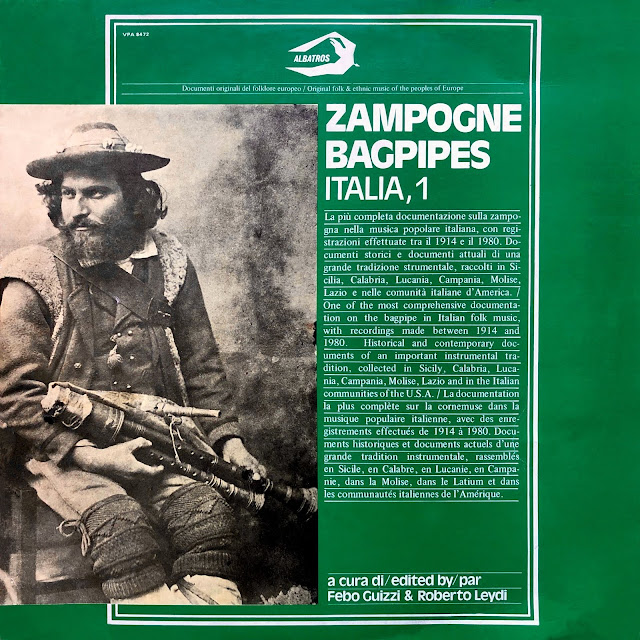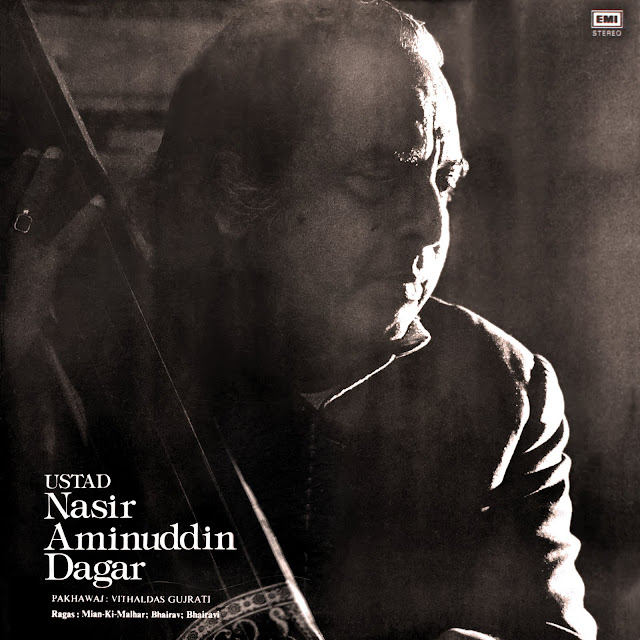Zampogne / Bagpipes Italia Vol. 1 – Albatros VPA 8472 – curated by Febo Guizzi (1947-2015) and Roberto Leydi (1928-2003), recorded 1914-1980 (LP)
Bagpipes – found principally in Western and Southern Europe, Northern Africa, Turkey, the Caucasus, and the Persian Gulf – are polyphonic woodwind instruments that consist of chanter melody pipes and drones with air continuously fed from an air bag usually made from animal hide.
The traditional Italian Zampogne, or Zampogna, bagpipes, sometimes accompanied by a tamburello frame drum and singing, are found in many Italian regions, particularly in Southern Italy, where it is central to folk heritage and identity. The Zampognari's pastoral roots are traced back to shepherds who spent long periods with their animals grazing in the countryside, where the zampogne would echo through the mountains. These musical shepherds also traditionally announced the coming of Christmas with their playing.
Volume 1 of this superb Italian bagpipe anthology on the Albatros label presents music performed on the short Surdulina bagpipes by members of the Italo-Albanian community in Calabria and Lucania (A1-A4), who settled in Southern Italy in the 14th century, following the Ottoman invasion of the Balkans; solo Zoppa bagpipes from central and northern Lazio (A5-A7); and bagpipes with key, used without the shawm, played in Calabria, Lucania and Lazio (B1-B6).
La cornemuse, que l'on trouve principalement en Europe occidentale et méridionale, au Maghreb, en Turquie, dans le Caucase et le golfe Persique, est un instrument à vent polyphonique composé de tuyaux mélodiques et de bourdons alimentés en continu par de l'air dans un sac-réservoir le plus souvent fabriqué à partir de peaux ou de vessies de bêtes.
La cornemuse italienne traditionnelle zampogne, ou zampogna, parfois accompagnée d'un tambour tamburello ou de chants, est présente dans de nombreuses régions en Italie, en particulier dans le sud, où elle elle occupe une place de choix dans l'identité et le patrimoine culturel. Les racines pastorales du zampognari remontent aux bergers accompagnant leurs animaux au pâturage qui faisaient résonner le zampogne dans les montagnes et les vallées. Ces bergers musiciens annonçaient également la venue de Noël avec leurs cornemuses.
Le
premier volume de cette superbe anthologie de cornemuses italiennes sur le
label Albatros présente des musiques jouées sur la petite cornemuse surdulina par des membres de la
communauté italo-albanaise de Calabre et de Lucanie (A1-A4), qui s'est installée
dans le sud de l'Italie à partir du XIVe siècle suite à l'invasion ottomane des
Balkans; la cornemuse zoppa dans le Latium
central et septentrional (A5-A7); et la cornemuse à clef sans chalumeau jouée
en Calabre, en Lucanie et dans le Latium (B1-B6).
Download
Zampogne player, Southern Italy, c. 1900:
















